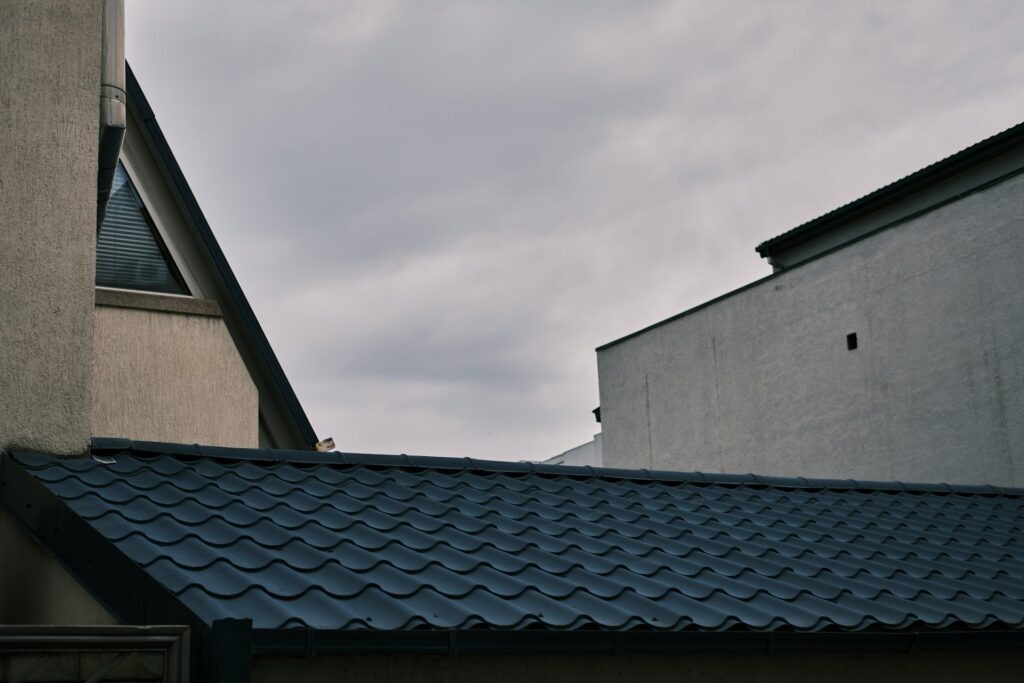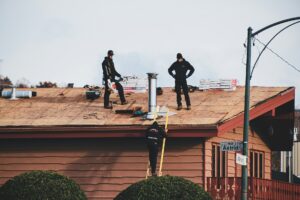Portland’s mild climate shapes every stage of the roofing process. While the relatively temperate summers and damp winters are ideal for cultivating greenery, these conditions can complicate or simplify roof construction, depending on how well you plan. With proper timing, a roof replacement in Portland can be remarkably smooth, saving time and money while protecting your home from the elements. Understanding seasonal weather shifts and knowing when roofing professionals are at their busiest can help you schedule a hassle-free installation.
In this guide, we explore the nuances of Portland’s climate, revealing the tradeoffs between a bright summer day’s warmth and a late autumn’s unpredictable rain. You’ll learn how to select the best time for your roof replacement and discover the strategies that keep moisture out of your attic while providing proper ventilation and insulation. With a little planning, your new roof will stand strong in all four of the Pacific Northwest’s seasons.
Why Timing Matters
Whether you’re upgrading to more resilient materials or dealing with persistent leaks, timing your roof replacement effectively can save both time and expenses. Portland has a relatively balanced yet varied climate. Heavy rainfall, especially during the winter months, can introduce moisture into the roofing process, potentially affecting adhesive curing and overall roof integrity. Clearer, drier days allow crews to work efficiently, preventing delays and ensuring materials bond properly.
When you choose the right season:
- You minimize weather-related project interruptions.
- You get better availability of reputable roofing professionals, ensuring timely completion.
- Your roof installation has the best chance to cure and settle properly.
A properly installed roof in the right weather conditions isn’t just about short-term savings; it delivers long-term energy efficiency and durability. Roofs replaced during optimal dry conditions allow adhesives, shingles, and sub-layers to bond well, preventing issues such as warping, curling shingles, or trapped moisture that can lead to mold.
Overview of Portland’s Seasonal Weather
Portland’s climate is often described as oceanic or marine west coast, with cool, wet winters and mild, dry summers. Though the weather is more moderate compared to many parts of the country, seasonal changes can still pose unique challenges.
Winter (December–February)
- Characterized by persistent rainfall and occasional freezing temperatures.
- Extreme moisture can interfere with the installation and the curing of certain materials.
Spring (March–May)
- Temperatures begin to warm, and rainfall gradually diminishes.
- Spring can be unpredictable, with showers still possible but more dry days opening up for successful installation.
Summer (June–August)
- Typically mild and dry, though occasional heat waves can happen.
- Longer daylight hours help roofing teams complete more projects on schedule.
Fall (September–November)
- Crisp mornings and moderate rainfall.
- Early fall generally has stable weather, but late fall brings heavier rains.
Knowing these general patterns helps you measure which season provides a balance of reliable weather and contractor availability.
Spring Roof Replacements
Spring might not be as immediately obvious for roof work, but it presents a strong case if you’re looking to get ahead of potential damage before the wetter months return. By getting your roof replaced in spring, you:
- Take advantage of moderate temperatures that help adhesives and sealants set effectively.
- Enjoy more open scheduling between the busy winter repair season and the peak summer months.
- Protect your home from unavoidable summer heat, ensuring your roof materials are finalized for efficient ventilation and insulation when temperatures rise.
However, there is a risk of unexpected rainfall. If storms sweep through, postponements may be required, extending the project timeline. Still, many Portland homeowners find spring to be a sweet spot between cold winter rains and the sometimes-scorching summer heat.
Summer Roof Replacements
Summer in Portland is relatively dry, making it prime time for most roofing projects. Although occasional heat waves can make it tough for roofing crews, overall conditions are favorable, with:
- Long daylight hours that increase productivity.
- Reduced moisture levels that hasten drying and ensure quality seals.
- Ample time for thorough inspections and finishing touches.
Be mindful, however, that summer is also peak construction season. Skilled roofing companies are in high demand, so securing a slot with a trusted contractor might require booking well in advance. Because of increased demand, pricing can also be higher than other times of the year. Still, if reliability and speed appeal to you, and you’re willing to plan accordingly, summer is a strong contender for your roof replacement.
Fall Roof Replacements
Early fall can be just as optimal as summer, especially if you prefer moderate temperatures. While you’ll need to be mindful of the potential onset of autumn rains, you still benefit from:
- Comfortable working weather that helps crews remain efficient.
- Often better pricing or scheduling flexibility in early fall compared to the late-summer rush.
- Protection before winter’s heavier rain returns in earnest.
Fall is also popular because it gives you a chance to clear out gutters, install gutter protection, and address any roof maintenance tasks in a single project window. By tackling these tasks together, you ensure your roof and drainage systems are prepared for the intense winter moisture typical in Portland.
One caveat: As Oregon transitions into the rainy season, it can become more challenging if your project runs into late October or November. Weather delays might require repeated rescheduling, but a reputable contractor will monitor forecasts to minimize disruptions.
Winter Roof Replacements
Though not typically advisable, winter roof replacements can happen under certain circumstances. If your roof has reached a point of critical damage, an immediate replacement may be unavoidable. Winter in the Pacific Northwest usually means:
- Increased precipitation that can hamper materials and complicate installation.
- Shorter daylight hours, slowing down work and extending labor costs.
- The potential for ice and snow on particularly cold days, making work sites less safe.
However, roofing contractor availability can be higher in winter, and you may find off-peak discounts. As long as the weather cooperates for durations long enough to perform dry-in stages, winter projects can be completed. Professionals strategically plan around rain and use quick-moving processes to shield any exposed roofing areas. Make sure you collaborate closely with your contractor to mitigate moisture risks.
Key Factors for Timing a Roof Replacement
While seasons are a big piece of the puzzle, other variables can help you decide the perfect replacement window:
- Budget Flexibility: If you’re seeking peak-season or off-season discounts, timing can drastically affect your costs.
- Contractor Availability: Aim to schedule your project well before intense seasonal demand.
- Roof Condition: A critically damaged roof dictates immediate attention, overriding most timing considerations.
- Personal Schedules: Your own availability matters. If your household or business transitions are better suited to certain months, factor that in.
Proactive planning helps you balance these considerations to choose the best time to start your roof project. Checking forecasts and prioritizing good communication with your contractor ensures you have enough clear days in a row to minimize stops and starts.
Project Management Tips
No matter which season you settle on, some universal strategies will streamline your roof replacement:
- Book Early
Whether you choose spring, summer, or fall, get in touch with your preferred roofing contractor long before the ideal start date. This head start allows for material orders, thorough consultations, and scheduling adjustments. - Inspect Early
Consider a professional roof inspection at least one season in advance. You’ll gain awareness of any hidden water damage, rotting underlayment, or mold issues that need addressing before new materials are laid. - Use Protective Measures
Install tarp systems or protective underlayment if unexpected weather happens mid-project. A seasoned roofing team will have a plan to manage sudden showers or gusts of wind. - Plan Around Holidays or Events
If large gatherings or personal travel are on your agenda, schedule a roof replacement around those dates to minimize disruptions. - Communicate Frequently
Stay connected with your roofing team throughout the process. Weather can shift quickly, especially in spring or fall, so monitor daily forecasts and remain flexible.
Material Choices for Portland’s Climate
Selecting appropriate roofing materials is just as important as picking the right time of year. Portland’s damp, moss-friendly environment calls for materials that will resist algae growth, handle humidity, and drain water easily. Some popular material choices include:
- Asphalt Shingles These remain the most common due to affordability and ease of installation. Look for algae-resistant variants to combat the Pacific Northwest’s moss growth.
- Metal Roofing Known for durability and longevity, metal can shed water exceptionally well. Metal roofing has become more popular in this region for its ability to resist rust when properly coated.
- Cedar Shakes These provide a classic, natural aesthetic blending well with Portland’s green surroundings. With consistent maintenance and treatments that protect against moss and insects, cedar shakes can thrive.
- Composite Roofing Engineered materials like composite slate or synthetic shakes can mimic the look of natural products while offering robust water resistance.
Working with an experienced contractor ensures you select materials that respond well to the temperature and moisture changes typical of each Portland season. Combined with savvy scheduling, you’ll create a roof that protects your home year-round.
Real-World Example
Imagine scheduling a roof replacement for mid-summer but overlooking the possibility of a rare, extended heat wave. Your roofing crew arrives early each day, but by afternoon, temperatures rise above 90°F on your rooftop. Asphalt shingles can soften, making them more prone to damage, and crew fatigue might slow the process.
A proactive approach might involve strategically starting in late summer or early fall, when temperatures are still warm enough for materials to bond reliably, but not scorching. Modular, incremental work sessions in cooler morning hours help keep the project moving without sacrificing quality. Such thoughtful planning ensures your project finishes on schedule and your roofing materials stand the test of time.
Additional Resources
If you want deeper insights into weather trends, visit the National Weather Service for Portland’s extended forecasts. For broader guidance on energy efficiency, you can explore the Energy Star recommendations for roofing products that can https://www.weather.gov/handle seasonal temperature swings. These resources can illuminate how best to prepare for specific time frames, especially if you’re navigating local microclimates around the region.
Seasonal Maintenance and Long-Term Benefits
A newly replaced roof is an asset worth preserving. While seasonal timing matters for installation, it also plays a major role in ongoing upkeep:
- In spring, clear gutters and check for any persistent debris or emerging moss.
- In summer, use the time for minor repairs while conditions are dry and stable.
- In fall, ensure your roofing system is ready for large amounts of leaves and heavy rains.
- In winter, keep an eye on ice dams and standing water issues, especially if you have flatter roof areas.
By making these simple maintenance tasks part of your annual routine, you’ll dramatically extend your roof’s lifespan. A well-timed and professionally installed roof retains its structural reliability and aesthetic appeal, ultimately increasing the value of your property.
Planning for Tomorrow
Portland continues to grow, with evolving building codes and emerging roofing technologies regularly coming into play. Sustainable, energy-efficient solutions and environmentally friendly material options reflect the region’s commitment to green practices. By selecting an optimal season to replace your roof, you also position yourself to explore new innovations without the stress of ongoing leak repairs or rushed decisions.
The city’s climate may occasionally throw in a surprise; however, a proactive, adaptable approach will keep your project on track. Embrace a fluid schedule, consult thoroughly with roofing experts, and finalize your choice of materials early. This way, the best time for a roof replacement isn’t just about picking the perfect month; it’s about aligning resources, forecasts, and future goals.
Final Thoughts
Selecting the best time for roof replacement in Portland is an investment in your home’s durability and energy efficiency. Each season presents its own set of conditions. Spring’s moderate rains can add unpredictability, summer offers clear skies and high demand, fall provides reasonably stable conditions early, and winter is possible, though it demands strategic planning and experienced contractors.
Ultimately, a well-planned roof replacement aligns with your personal schedule, your budget, and your home’s unique needs. When all these elements converge, you’ll have a roofing project that comes together smoothly, stands up to Portland’s rain and occasional heat, and continues to protect your property for years to come.
Remember that your contractor’s expertise, combined with early scheduling and resourceful planning, can turn any time of year into the right time to install a durable, dependable roof. Maintain an open dialogue throughout your project, pay close attention to forecasts, and remain flexible enough to adjust along the way. By doing so, you ensure the best possible outcome for your home, both now and far into the future. “`




